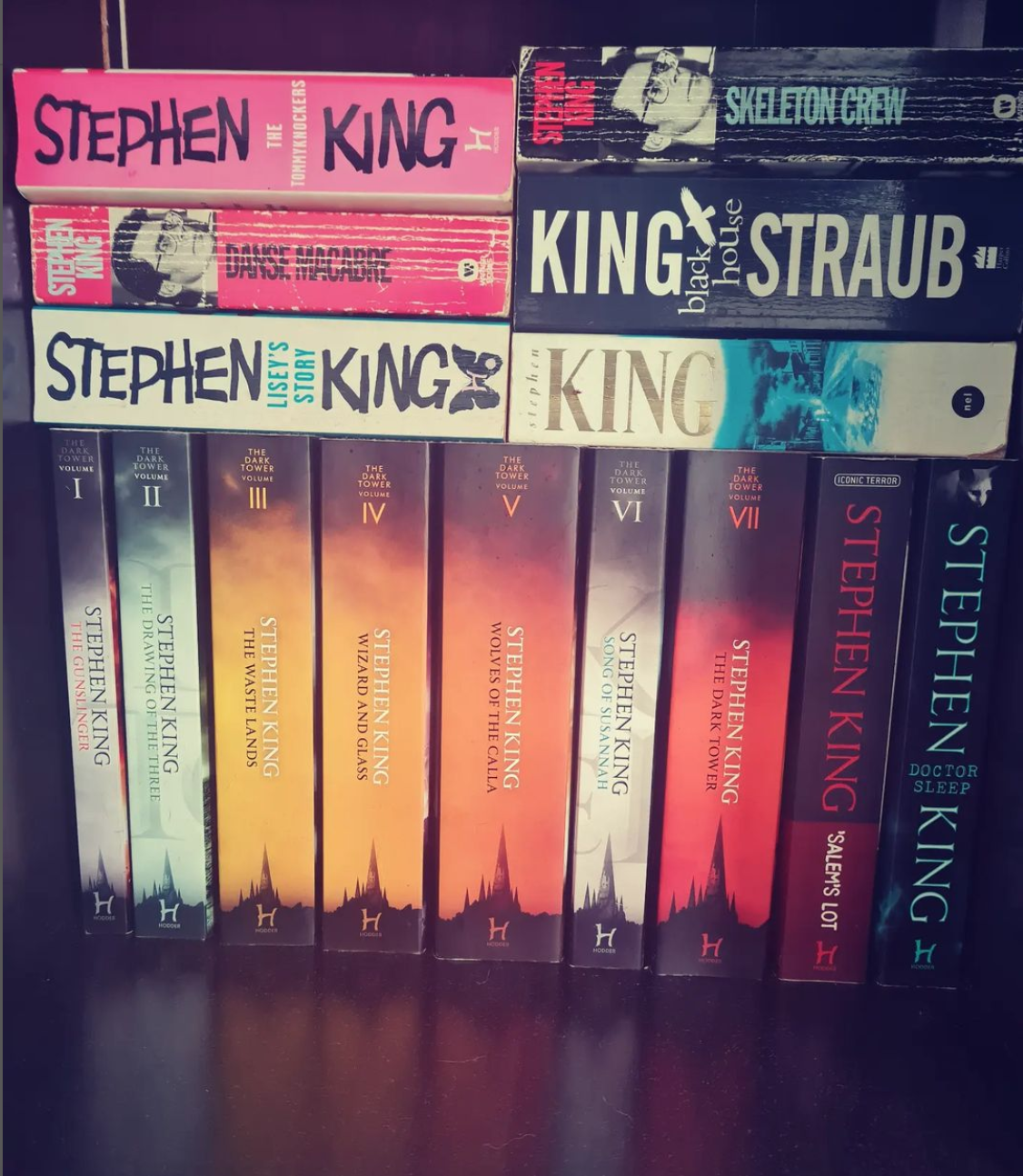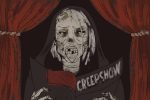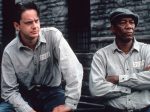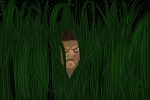Sometimes one universe isn’t big enough to tell a story. Writers must sometimes enter a realm where anything, literally anything, is possible to complete their story. That realm is the place in which all universes co-exist in a great soup spanning an eternity, commonly referred to as the multiverse.
For those who don’t know, the multiverse is essentially what it sounds like: a vast multitude of different universes existing together. In most multiverse narratives, our universe serves as the “main universe,” while others are discovered through advanced science, powerful magic or whatever else the writer can think of. These alternate universes are usually similar to ours save for a few minor differences, while others are completely nonsensical and defy expectations.
In the multiverse, the same person may exist in a number of universes, but their lives may be totally different. Say, for example, you were a simple mailman in this universe. Well, in the universe a block away from ours you may be an astronaut, a noble warrior or a sailor. Perhaps, under different circumstances, you may not be a human being at all; instead, you’re a dog, an alien or a mutant being that started life as a frog. Or, sadly, you may not exist at all. This idea applies to everything else as well — specific events in history, our very planet and even the very laws of nature. It’s ideas like these that writers love to toy with; the possibility of infinite possibilities is too fun to not write about.
Although the concept of the multiverse has existed for decades, it has recently seen a rise in popularity. Films, like the animated hit “Spiderman: Into The Spiderverse” and games such as “Super Smash Bros” have shown the potential of the multiverse to host crossover events in which many characters (or alternate versions of the same character) come together and interact. Indie flicks like A24’s critically acclaimed “Everything Everywhere All at Once” uncover the endless possibilities the multiverse concept has to offer while also telling a compelling story about not losing the joys of living. TV shows like “Rick and Morty” show the viewer just how wild the multiverse can be while sending them into hysterics. If you have a particular craving for multiverses, all these examples are right up your alley, but if you are still not satisfied, fear not. A novel series that may satisfy your craving once and for all is Stephen King’s “The Dark Tower.”
Everyone knows who Stephen King is at this point. He’s the author responsible for novels such as “It,” “Pet Sematary” and “The Shining,” many of which are still widely read and highly regarded today. If you’re just getting started with King, you may be surprised to discover that many — if not all — of his works are connected to at least one other work of his, either through characters, Easter eggs or locations. The town of Derry from “It” is also the setting for works such as “Insomnia” and “11/22/63.” The evil wizard Flagg from “Eyes of the Dragon” is also the one responsible for the acts of evil in “The Stand.” In “Pet Sematary,” the old man Jud Crandall mentions a rabid St. Bernard, possibly the same one from “Cujo.” These connections all make up Stephen King’s shared universe, which itself exists in a vast multiverse explored in several of his other works. In “The Talisman,” a boy named Jack Sawyer travels to a fantasy world known as The Territories. In “Ur,” a man obtains a strange Kindle that can access information from other universes. In “Lisey’s Story,” a parallel world named Boo’ya Moon is visited. And finally, connecting everything together, is “The Dark Tower,” in which the multiverse must be saved from destruction.
Heavily inspired by Robert Browning’s poem “Childe Roland To The Dark Tower Came,” J.R.R Tolkien’s “Lord of the Rings” trilogy, Sergio Leone’s Wild West classics and Arthurian legend, “The Dark Tower” series chronicles the adventures of Roland Deschain, a traveler of Mid-World, a shattered, run-down world that has “moved on.” Deschain is a gunslinger, a type of warrior from the fallen city of Gilead. The last of his kind, Roland wants to find Dark Tower, the central linchpin of all time and space, in hopes of reaching the top and righting the wrongs of his world. But in a world that has “moved on,” Roland’s quest is not without adversity. Evil lurks around every corner and under every shadow in hopes of sinking its teeth into the uninitiated. However, Deschain is prepared. Brandishing two ancient but powerful revolvers, he blasts his way through evil in his quest to reach the Tower. It is his life’s goal and his ultimate obsession.
Deschain is not alone in his quest. Traveling alongside him are three people, all of whom were drawn to Mid-World from Earth: Jake Chambers, a young boy who Deschain views as a son; Eddie Dean, a former drug addict with a penchant for cracking jokes; and Susannah Dean, a former Civil Rights activist with a shadowy second half. Joining them much later is Oy, a creature native to Mid-World who grows close to Jake. This group, known in the ancient language of Mid-World as a Ka-Tet, loyally follows Roland in his pursuit of the Tower, abandoning their old lives in the process. In turn, Deschain begins to view them as family.
As their journey progresses, the Tet quickly learns that the Tower is in great peril. The evils of the world wish to topple it in hopes of wiping out all of existence and unleashing an endless age of chaos. Already tampering with the Tower has resulted in the ruination of numerous worlds, Mid-World’s fractured state, the confusion of time itself and other horrible outcomes. To that end, the Tet makes it their goal to halt the Tower’s downfall indefinitely and to bring stability back to existence.
A sprawling eight-part tale written in a span of over 20 years, “The Dark Tower” is Stephen King’s magnum opus. Combining a number of different genres including sci-fi, Western, horror and fantasy, “The Dark Tower” series is sure to please King fans, the casual reader and fans of multiverse narratives. But how does the multiverse affect “The Dark Tower” exactly? If this question piques your curiosity, continue reading. But if you hate spoilers, stop here.
Twinners
When he was first brought to Roland’s world in “The Drawing of the Three,” Eddie Dean was nothing more than a heroin addict. He was a man who Deschain did not tolerate at first because of his addiction and his tendency to joke around. As time passes and the two bond, Deschain realizes the greater intelligence behind Eddie’s wit and respects him for fighting his addiction. Eddie also shows himself to be more than worthy of earning the title of gunslinger—he is an excellent survivalist and a fast gunfighter. As such, Deschain is constantly reminded of an old friend of his, a boy named Cuthbert Allgood. Allgood, much like Dean, was a jokester and a hard-headed fighter, and Roland begins to view Eddie as a sort of reincarnation of him. But the reader comes to learn that Eddie is more than that. In “Song of Susannah,” it is revealed that Eddie is, in fact, a “twinner,” a person from one universe who resembles someone from another. Much later, in the final novel of the series, simply titled “The Dark Tower,” another twinner of Eddie is introduced, named Eddie Toren. The idea of twinners is explored further in other novels such as “The Talisman,” in which Jack Sawyer meets twinners of people he knows from his universe.
Characters from Other Stories
“Salem’s Lot” was one of King’s earliest novels, written in 1975. The novel tells the story of a town named Jerusalem’s Lot whose residents are slowly being turned into vampires by evil Kurt Barlow. One of the major characters in the story is Pere Donald Callahan, a priest who unsuccessfully tries to defeat Barlow. This character appears in “The Wolves of the Calla,” in which he meets the Tet, explains how he arrived in Mid-World and becomes a vital part of the Tet until his untimely death.
“Hearts in Atlantis” is a collection of short stories written by King and published in 1999. One of these stories, “Low Men in Yellow Coats,” tells the tale of Ted Brautigan, a telepath who is on the run from the titular beings who wish to capture and take him to an unknown location. Unfortunately, they are successful, and readers learn that this undisclosed location, located in Mid-World, functions to end the Dark Tower in the multiverse. It’s only logical that the Tet discovers and wishes to destroy this location, and in doing so meets Brautigan, who assists them.
In between universes lies the Macroverse, a realm filled with monsters. The Macroverse is first introduced in King’s horror novel “It,” which is about an evil clown who terrifies children in the town of Derry. The clown, going by the name Pennywise, is actually an entity from the Macroverse known as the Deadlights — ancient, life-destroying lights that can drive individuals insane. But Pennywise is not the only creature in the Macroverse. Existing alongside him is Maturin, a powerful turtle God (yes, that’s right). Maturin was the one responsible for the creation of the universe, and he opposes the clown and assists the main characters in his defeat. He is also the one responsible for helping the Tet on their journey to the Tower several times, and for giving Deschain his purpose of reaching it in “Wizard and Glass.”
Lastly is the Man in Black, Deschain’s arch-nemesis. He is a powerful wizard who serves the demonic Crimson King, the supervillain of “The Dark Tower” series, and he has gone by many names in his past, all of which possess the initials R and F: Rudin Filaro, Russel Faraday, Richard Farris and Randall Flagg, to name a few. If Flagg sounds familiar, then it should: As stated earlier, he was responsible for the evil in “The Stand,” “Eyes of the Dragon” and several other stories. As he is a wizard, Flagg has access to magic doors that can transport him to other worlds, where he indulges in causing chaos and spreading fear.
Thinnys
As the Tower’s control over existence weakens, the walls of reality begin to grow thin. Because of this, strange places known as thinnies have sprouted up everywhere. Thinnies are essentially holes in reality that can lead to alternate universes. For example, in “Wizard and Glass,” the Tet encounters a thinny that transports them to a superflu-ravaged Topeka, Kansas. Much later in the same story, Roland explains how he used a thinny in his early days to defeat a group of barbarians. This thinny, unlike the previous one, led to a nightmarish dimension riddled with monsters. Thinnies also appear in “The Talisman,” the horror novella “The Mist” and the TV series “Haven.”
The White and the Red
As the “Dark Tower” series holds up every other world mentioned in King’s expansive multiverse, connections are inevitable. In “Insomnia,” the lead character Ralph Roberts learns of the Purpose and the Random, two different forces of nature that oppose each other like the colors on a checkerboard. The Purpose exists to deal with those who die naturally, while the Random deals with those who die sudden, horrible deaths. The Purpose and the Random both represent two great forces known as the White and the Red. The White represents goodness and unity while the Red represents the evils of the world. Roland is a representative of the White, while the Red is represented by the Crimson King, the main supervillain of King’s multiverse.
Metafictional Meet-Ups
Every universe exists in the “Dark Tower” multiverse, but what about this universe, the “real” one? Well, it turns out that this universe exists in the multiverse as well, and it plays an especially important role. When Roland and Eddie are thrown into this universe following the events of “Wolves of the Calla,” they encounter a certain young writer living in Maine, whose very life may be at stake from the Crimson King and his forces. This writer, as the two discover, serves as a conduit for Gan, the god of King’s multiverse, and by writing his novel series “The Dark Tower,” he is assisting Deschain by subtly giving him instructions.
This writer goes by Stephen King, and if you meet him, don’t try and ask him about all this. His memory was wiped by Roland via hypnosis so he’ll probably only get confused.
















